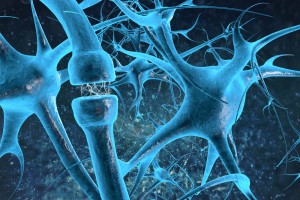
The recovery rate for individuals prescribed antipsychotics is varied and it has been estimated that only 30% of patients receiving antipsychotic treatments respond and enter full remission (H. Steeds et al, 2015).
Providing effective treatment during the first episode of schizophrenia is important as it has been shown to improve long-term outcomes: patients at this stage respond better to antipsychotics, require lower doses and have a better overall prognosis than chronic patients (S. Leucht et al, 2015).
Switching antipsychotics is a strategy often used by clinicians; however, questions remain regarding the effectiveness of this option, including determining which drugs are most suitable and how long to wait before switching occurs.
This paper tackles the question of whether patients experiencing their first episode of schizophrenia, who fail to respond to the antipsychotic prescribed, will benefit from switching to another drug. Divided into two parts, the paper begins with a review of current studies investigating the effectiveness of switching antipsychotics, and is followed by an outline of the methods selected for the Optimization of Treatment and Management of Schizophrenia in Europe (OPTiMiSE) trial.

The early bird catches the worm! Early intervention for people with schizophrenia improves long-term outcomes.
Review of the effectiveness of switching antipsychotics
Review methods
The authors searched PubMed up until 29 October 2014, using the following criteria for inclusion:
- Patients with a diagnosis of schizophrenia, schizophreniform or schizoaffective disorder (using any diagnosis criteria), who had been treated prospectively with a first antipsychotic drug.
- Non-responders were randomised and switched to another antipsychotic drug or pharmacological strategy.
No restrictions were placed on the drug used, dose administered, or when the antipsychotic switch occurred. Any studies where non-response was established retrospectively or had a prospective run-in phase were excluded, as these results were not investigating whether switching drugs is effective but the efficacy of a specific drug in treatment resistant patients.
Results of the review
The search found 10 studies. However, despite the authors’ aim of investigating the effectiveness of switching antipsychotics for first episode patients, none of the studies identified addressed this stage of schizophrenia. The results for each study were reported separately, and no analysis of the overall results was provided.

The literature review did not identify any prospective studies on antipsychotic switching that were restricted to first episode patients.
OPTiMiSE Trial Design
The second part of this paper provides an outline of the methodological choices for the current OPTiMiSE trial, which aims to gather data on 500 patients diagnosed with schizophrenia, schizophreniform or schizoaffective disorder (using DSM-IV criteria and verification using the Mini International Neuropsychiatric Interview Plus).
Participants must be aged between 18 and 40 years, and the onset of psychosis must not have occurred more than two years before joining the study. Participants must not have received any antipsychotics for longer than two weeks duration in the previous year, or for a period longer than six weeks during their lifetime.
The trial will involve three phases:
Phase 1
Participants will be treated for four weeks with open-label amisulpride (200-800 mg/day). After four weeks, patients in remission will be excluded from continuing in the main trial, and those who don’t respond to treatment will be randomised before proceeding to Phase 2. Amisulpride was selected for this phase of the study based on the promising results in various meta-analyses and the European First Episode Schizophrenia Trial (EUFEST). Amisulpride is a unique atypical antipsychotic which works as a selective dopamine D2/D3 and serotonin 5-HT7 receptor antagonist (but doesn’t act as a 5-HT2a receptor antagonist).
A subgroup of participants will also undergo Magnetic Resonance Imaging and Magnetic Resonance Spectroscopy scans, alongside a healthy control group.

Patients will initially be given amisulpride, which is a unique atypical antipsychotic, working as a selective dopamine D2\D3 and serotonin 5-HT7 receptor antagonist.
Phase 2
Participants are randomly assigned to receive a six week double-blind treatment of:
- Continue receiving amisulpride (200-800 mg/day), or
- Switch to olanzapine (5–20 mg/day)
After six weeks, patients in remission will again be prevented from proceeding to the final stage of the trial, and those who don’t respond to treatment will proceed to Phase 3. Olanzapine has a different receptor binding profile to amisulpride, but was also demonstrated to provide effective treatment in the EUFEST study. Olanzapine is a multi-receptor antagonist, but provides a stronger blocking effect for central serotonin receptors than for dopamine receptors (in contrast to the selective D2/D3 antagonism of amisulpride).

Phase 2 treatment will be with Olanzapine. This drug contrasts with Phase 1 treatment in that it is an antagonist that provides stronger blocking for central serotonin receptors than for dopamine receptors.
Phase 3
Participants who do not respond to the treatment provided in the previous phases will receive a 12 week open-label trial of clozapine (100-800 mg/day). Despite being demonstrated in numerous RCTs and meta-analyses to be the most efficacious drug for treatment resistant schizophrenia, clozapine also has well documented adverse effects.
All patients in remission at the end of each phase and those who leave the clozapine phase will be randomised to receive either:
- a psychosocial intervention designed to improve adherence, or
- continue treatment as usual.
Throughout all three phases, the primary outcome of symptom remission will be rated using eight symptoms measured as ‘mildly present’ (a maximum rating of ‘3’) using the Positive and Negative Syndrome Scale (PANSS). Secondary outcomes will be measured using the PANSS total and sub scores, together with social functioning, quality of life, tolerability, weight gain and adverse effects.
At the time of writing, Phase 1 has recruited 372 participants, with 79 patients proceeding to Phase 2, and a further 23 people in Phase 3. Results are expected to be published in 2016.

Phase 3 treatment will be with clozapine, documented as the most efficacious drug for treatment-resistant schizophrenia.
Discussion
The authors’ search of the current literature regarding the benefits of switching antipsychotics, produced a limited number of relevant papers, and only the results of individual studies have been reported here. Further combined analysis of the individually reported results would provide a valuable overview of what the current evidence reveals about the benefits of switching antipsychotics.
The OPTiMiSE trial is currently ongoing, and this paper provides a brief outline of the methodology used (more information on randomisation, blinding etc. would be welcome). The trial will provide valuable evidence regarding the effectiveness of switching antipsychotics, including potential guidance on which drugs to use, and in the event of non-response the optimum length of time to wait before switching.
The trial will investigate whether non-responding patients could benefit from switching to a drug specifically selected due to its different receptor binding profile (in this instance, switching from a selective dopamine antagonist to a drug that provides a stronger blocking mechanism for serotonin receptors).
Evidence will also be provided regarding the effectiveness of switching after four weeks of treatment (helping to establish guidelines for clinical practice), and whether a systematic application of the potentially harmful drug clozapine for non-responsive patients is beneficial.

It is hoped that the OPTiMiSE trial will shed some light on which drug treatments (or changes in drug treatments) may be advantageous for people with schizophrenia.
Links
Primary paper
Leucht S. et al. (2015) The Optimization of Treatment and Management of Schizophrenia in Europe (OPTiMiSE) Trial: Rationale for its Methodology and a Review of the Effectiveness of Switching Antipsychotics. Schizophr Bull (2015) 41 (3): 549-558 first published online March 18, 2015 doi:10.1093/schbul/sbv019 [PubMed abstract]
Other References
Hannah Steeds, Robin L. Carhart-Harris and James M. Stone. Drug models of schizophrenia. Ther Adv Psychopharmacol 2015, Vol. 5(1) 43–58 DOI: 10.1177/2045125314557797.

What @Mental_Elf think about it ? https://t.co/Eir8PyVDp4
Morning @StefanLeucht We’ve blogged about your OPTiMiSE trial today. Please let us know what you think http://t.co/h4ciy0IpvC
Switching antipsychotics in schizophrenia: the OPTiMiSE RCT http://t.co/VtE0SbeJP7 #MentalHealth http://t.co/g91ZrjuY5r
Switching antipsychotics in schizophrenia: here @mental_elf looks at the OPTiMiSE RCT to see which might be best http://t.co/dR6Ih3AvP8
Review finds no prospective studies on antipsychotic switching that were restricted to first episode patients http://t.co/h4ciy0IpvC
Switching #antipsychotics in #schizophrenia: the OPTiMiSE #RCT Review of an ongoing #research trial by @Mental_Elf http://t.co/SJrgOYaS1m
How can we optimise the treatment and management of schizophrenia? http://t.co/h4ciy0IpvC
Don’t miss: Switching antipsychotics in schizophrenia: the ongoing OPTiMiSE RCT http://t.co/h4ciy0IpvC
RT @playlablondon: ‘Switching antipyschotics in #schizophrenia’ V. interesting study @Mental_Elf http://t.co/IpOJua9Fmm @StefanLeucht #ment…
The #ClarityBadger this week goes to @tracey107uk for her concise summary of the OPTiMiSE RCT http://t.co/h4ciy0IpvC http://t.co/Jbk9vzapR2
@Mental_Elf Thank you :)
Switching antipsychotics in schizophrenia: the OPTiMiSE RCT https://t.co/fB7stLhXrI vía @sharethis
“@CALDirector: Switching antipsychotics in schizophrenia: the OPTiMiSE RCT https://t.co/8zCnmXE2J1 vía @sharethis”
Switching antipsychotics in #schizophrenia: the OPTiMiSE RCT via @Mental_Elf http://t.co/aKbq4UAElp #mentalhealth
In phase 3, clozapine is 100 mg/ D which is a sub therapeutic dose.
Well spotted Ahmed.
I’ve referred back to the paper and actually the phase 3 clozapine dose is 100-800 mg/day, not 100 mg/day.
Apologies for that oversight. We have now corrected Tracey’s blog so that it has this correct dosage figure.
Cheers,
André
Thanks Dr Andre
Hi Ahmed,
This was a typo, and should have stated that the clozapine dose range was 100-800 mg/day. Thanks for bringing this to our attention.
Tracey Roberts
Never mention. Your great meticulous effort is appreciated
[…] but further research is required. In combination with the findings of the current SWITCH and OPTIMISE studies on effective treatment strategies in cases of non-response, this study will aid the […]